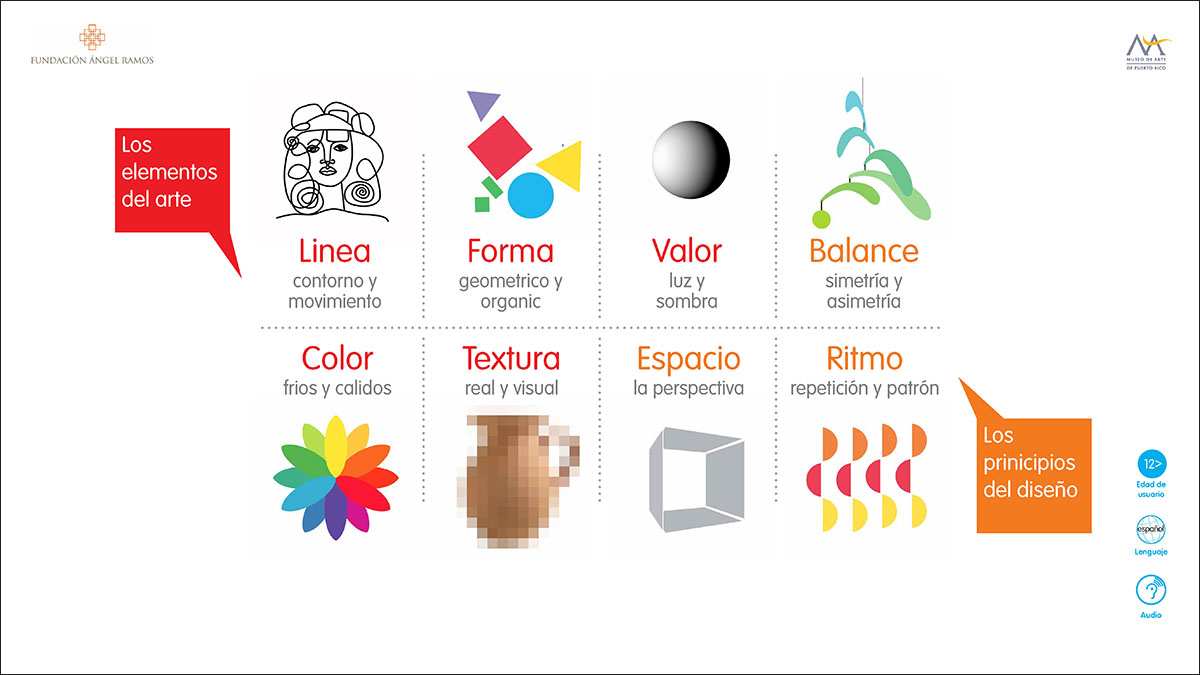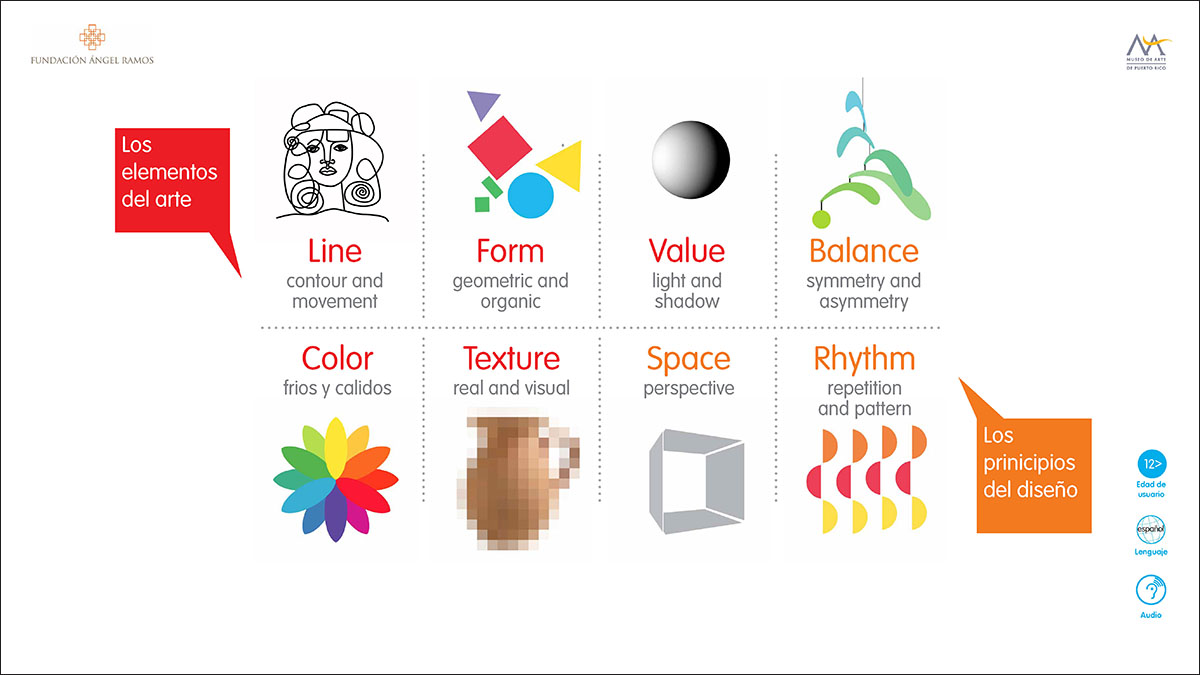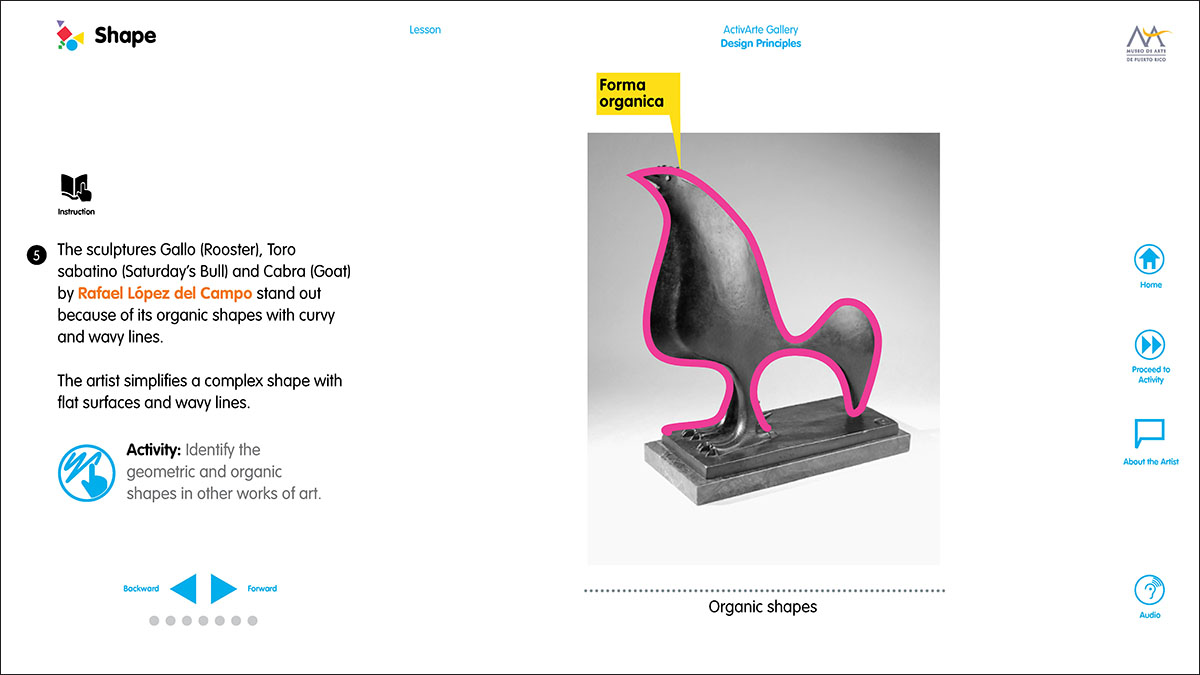Visual Literacy Interactive at the Museum of Art in Puerto Rico
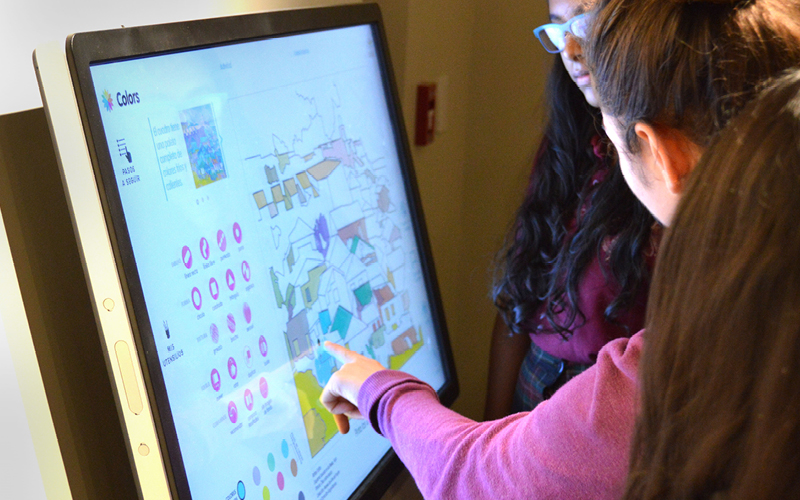
"The Elements of Art" is an art education digital interactive produced for el Museo de Arte de Puerto Rico (Puerto Rico Museum of Art) in San Juan Puerto Rico. The kiosk is physically located in the ActivArte gallery. A space dedicated for education at the Museum. The content was developed by Doreen Colón Camacho, director of education at MAPR and Mariano Desmarás, Creative Director of Museum Environments. The project was sponsored by La Fundación Angel Ramos.
Design Goals: In Puerto Rico, there are a few opportunities for school aged children to receive skill based arts education and to learn about the artistic heritage of the island. Our goal was to respond to both of these educational needs with a self-guided digital experience. The digital interactive provides guidance in essential concepts of the elements of art and design principles, and allow for the visitor to produce visual products in evidence of understanding the new concepts. The experience strengthens interpretative analysis of visual arts.
Client: El Museo de Arte de Puerto Rico
Education Curator: Doreen Colón Camacho
Museum Director: Lourdes Ramos
Identify the Elements of Art A series of animation illustrate lessons on the Elements of Art. The slides on the left show the lessons on geometric and organic shapes.
Sample Art from the Collection All the art shown in the digital interactive are from the museum's collections. The art works are on display adjacent to the physical installation of the touchscreen interactive.
Bilingual Design
Initial menu page with animated icons. The program is fully bilingual. There is toggle switch that allows the user to chose language of preference. The program also offers bilingual audio.
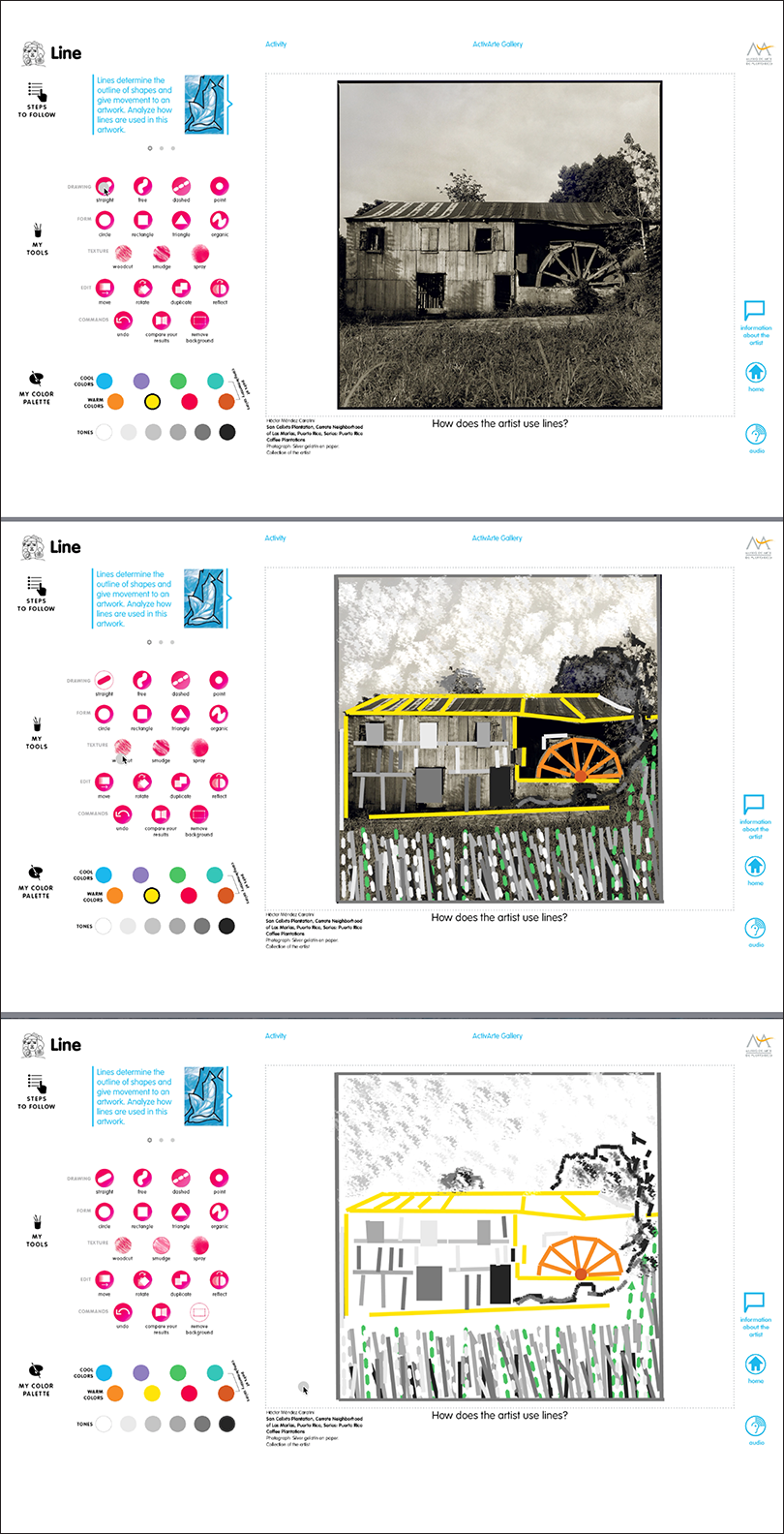
Scaffolding Visual Literacy Lesson Users are asked to interpret images through the lens of a single element of art, such as line, texture, shape. etc. Drawing tools allows them to draw over images and discover the underlining structure to image. The slides on the left show the progressive steps in visual interpretation. In the final step, the user may remove the background image and see their work as it stands on its own.

Group Interaction The open-endedness of the activities also permits several users to work on the same exercise. Here students from local high school work on a color exercise.
Extending the Parameters of Visual Literacy
Currently Visual Literacy can be defined as “the ability to interpret, negotiate, and make meaning from information presented in the form of an image..” This definition highlights the emphasis on the interpretation or reading of images in today’s practice of Visual Literacy. In the curriculum of our interactive, we wished to expand on this approach and include “visual prodution” as part of visual literacy. Just like we think of writing as essential to literacy, we deem visual production as a necessity of the visually literate. For this reason we emphasizes the interactive part of the program. We believe that when the student understands the making of an image then they are better equipped to deconstruct and re-interpret it. Through this experience it becomes more evident that the image was “produced”- it did not "just come like that." Someone designed it, and therefore it can be critically un-packed. Just like an architect can tell how a building is made, we wanted our user to like-wise understand the structure of an image.
The approach in this interactive returns to some extent to the origins of Visual Literary as it was developed in “A Primer of Visual Literacy” by Donis A. Dondis (1973). The book elaborates a “problem solving” method that uses visual elements (unity vs fragmentation, stability vs instability, etc). The MAPR interactive picks-up on this approach however we do not intended the user to produce an verbal explanation of the picture. We want the user to learn and develop a visual language. The results are often poetic and works of art in of themselves.
Category: Portfolio, Uncategorized
Copyright © 2024 · All Rights Reserved · Museum Environments
· Log in

